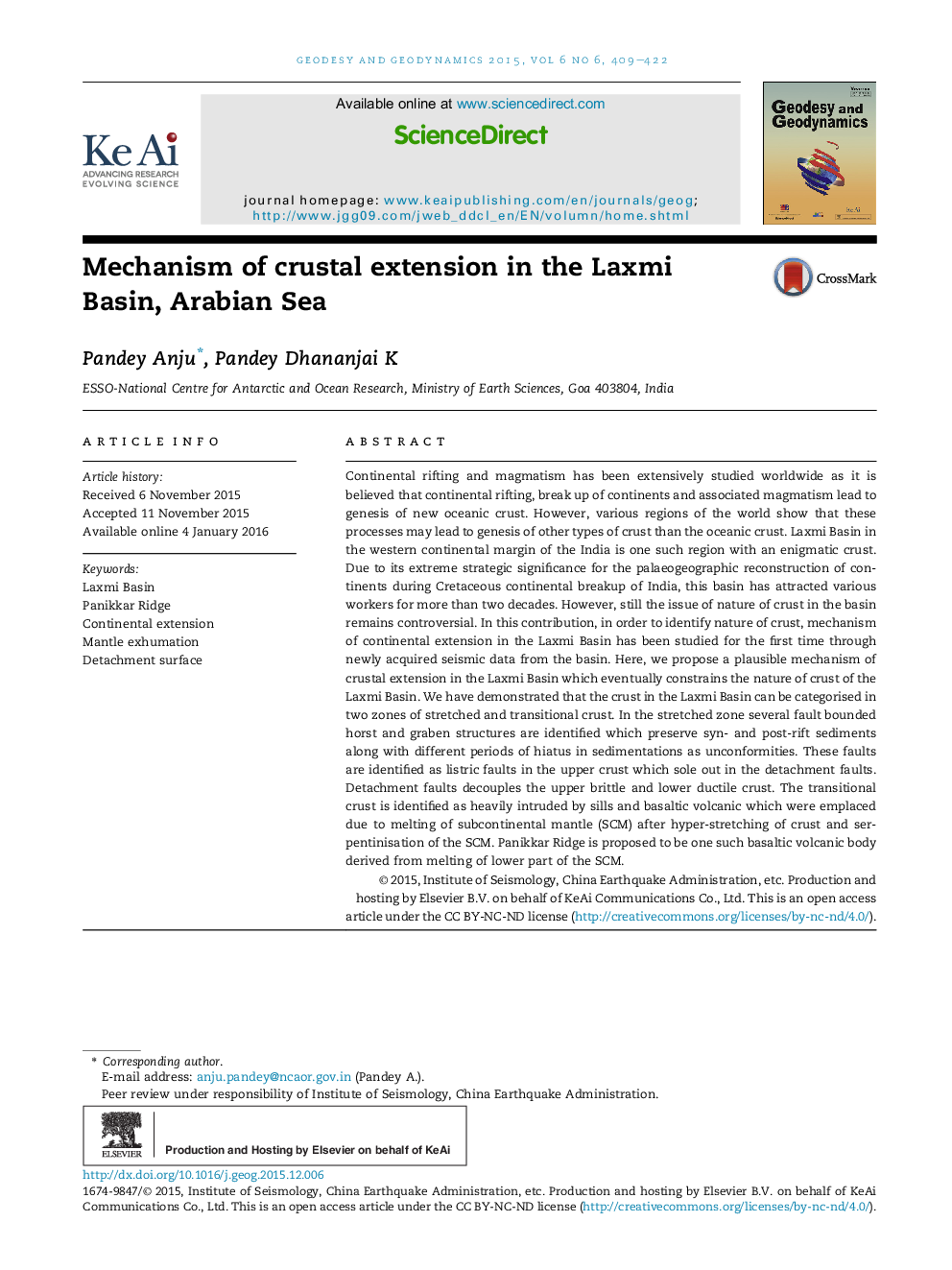| کد مقاله | کد نشریه | سال انتشار | مقاله انگلیسی | نسخه تمام متن |
|---|---|---|---|---|
| 4683598 | 1349323 | 2015 | 14 صفحه PDF | دانلود رایگان |

Continental rifting and magmatism has been extensively studied worldwide as it is believed that continental rifting, break up of continents and associated magmatism lead to genesis of new oceanic crust. However, various regions of the world show that these processes may lead to genesis of other types of crust than the oceanic crust. Laxmi Basin in the western continental margin of the India is one such region with an enigmatic crust. Due to its extreme strategic significance for the palaeogeographic reconstruction of continents during Cretaceous continental breakup of India, this basin has attracted various workers for more than two decades. However, still the issue of nature of crust in the basin remains controversial. In this contribution, in order to identify nature of crust, mechanism of continental extension in the Laxmi Basin has been studied for the first time through newly acquired seismic data from the basin. Here, we propose a plausible mechanism of crustal extension in the Laxmi Basin which eventually constrains the nature of crust of the Laxmi Basin. We have demonstrated that the crust in the Laxmi Basin can be categorised in two zones of stretched and transitional crust. In the stretched zone several fault bounded horst and graben structures are identified which preserve syn- and post-rift sediments along with different periods of hiatus in sedimentations as unconformities. These faults are identified as listric faults in the upper crust which sole out in the detachment faults. Detachment faults decouples the upper brittle and lower ductile crust. The transitional crust is identified as heavily intruded by sills and basaltic volcanic which were emplaced due to melting of subcontinental mantle (SCM) after hyper-stretching of crust and serpentinisation of the SCM. Panikkar Ridge is proposed to be one such basaltic volcanic body derived from melting of lower part of the SCM.
Journal: Geodesy and Geodynamics - Volume 6, Issue 6, November 2015, Pages 409–422